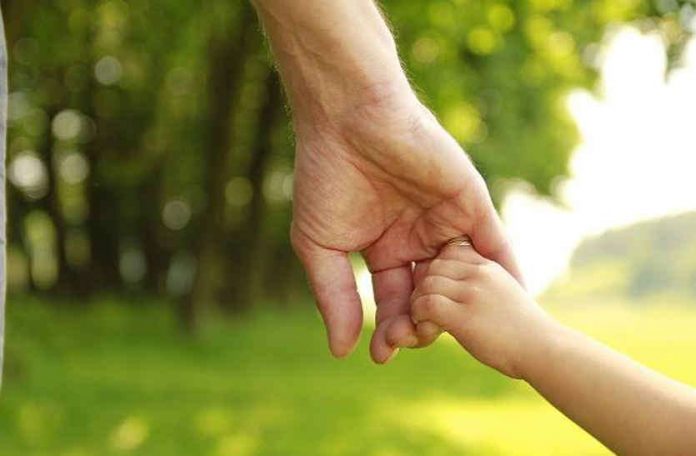This article is written by Aastha Verma, from Kalinga University, Raipur, Chhattisgarh. The article describes the law of adoption and the role of stakeholders in the adoption process, and initiatives taken by the government for the pandemic orphans.
Table of Contents
Introduction
Adoption is a social, emotional, and legal process in which children, who are not able to be raised by their birth parents, become full and permanent members of another family. It is a connection between the child and the caregiver that is legal and binding on both parties. It allows the adoptive parents to make decisions that influence the child’s destiny.
COVID-19 has raised several issues, ranging from the economic slow down to the inter-state migrant issue. One such issue is the issue of pandemic orphans. These are the children who lost their parents and are left without any help in the time when the pandemic was at its peak. The problem of illegal adoption was also brought to attention by the National Commission for Protection of Child Rights (NCPCR). This highlighted the plight of pandemic orphans and directed attention towards the adoption process, principles, and body that govern them in the country.
Adoption in India
In India, Hindu law addresses the rules and regulations of an adopted child under the Hindu Adoption and Maintenance Act, 1956. This Act removes several gender-biased discriminatory factors by reflecting the principle of equality and social justice. Citizens of India who are Hindu, Jain, Buddhist, or Sikhs can adopt children under this Act. Moreover, adoption is not recognized in the personal laws of Muslims, Christian, Paris, and Jews in India, rather it is recognized under the Guardianship and Wards Act, 1890.
Adoption under the Hindu Adoption and Maintenance Act, 1956
Sections 6 to 11 of the Hindu Adoption and Maintenance Act, 1956 defines the essential conditions for a valid adoption.
Section 6 of the Act defines the essentials for a valid adoption. The person adopting the child should be capable of adopting the child. The person giving the adoption must be capable of doing so.
Sections 7 and 8 of the Act state the capacity of male and female Hindus to adopt. The person adopting should be major and of sound mind. A Hindu male, who is major and of sound mind, can adopt a child irrespective of him being a bachelor, widower, divorcee, or married. However, if he is married then the consent of the wife is mandatory and if he has more than one wife, then the consent of all is necessary. An adoption made without the consent of the wife is void.
Hindu unmarried women, divorcees, or widows can adopt a child. A married woman, however, cannot adopt a child, subject to certain exceptions:
- If the husband has ceased to be Hindu.
- If her husband has finally and completely renounced the world.
- If he is declared as unsound by the court.
Section 9 of the Act mentions the person who is capable of giving in adoption. Only the father or mother or the guardian of the child can give the adoption of the child. The father or mother has an equal right to give the son or daughter in adoption. This right is exercised by any one of them with the consent of the other unless one of them ceases to be Hindu or is declared to be of unsound mind by the court.
When both of the parents have renounced the world or have been declared as unsound by a court of law, in that case, the guardian of the child can give the child in adoption, with the prior permission of the court.
Section 10 of the Act states a person who may be adopted. Certain conditions should be fulfilled for a valid adoption to take place.
- The child must be a Hindu.
- He/She has not already been adopted.
- He/She is not married unless there is a custom or usage that permits such adoption.
- He/She has not completed the age of 15 years unless there is a custom or usage that permits such adoption.
Section 11 of the Act mentions other essentials for a valid adoption:
- If adoption is of a boy, the adopting parents should not have a Hindu son during the time of adoption.
- If adoption is of a girl, the adoptive parents should not have a Hindu daughter during the time of adoption.
- If a female is adopted by a male parent then there should be an age gap of twenty-one years.
- If a male is adopted by a female parent then there should be an age gap of twenty-one years.
- The same child cannot be adopted simultaneously by two or more people.
- The adoption must be given and taken by the parents’ concern or under their authority with intent to transfer the child from the family of its birth to the family of its adoption.
Adoption under Guardianship and Wards Act, 1890
Personal laws of Muslims, Christians, Parsis, and Jews do not recognize complete adoption. They do not have the laws to adopt the child legally so the desirous parents adopt their child under the Guardianship and Wards Act, 1890. However, this act does not provide the rights to the child the same as a child born biologically. Here, the child cannot become their own child. Also, they cannot inherit their property by right. It only confers the guardian-ward relationship. This relationship exists only till the child attains the age of 21 years.
Foreigners who seek to adopt an Indian child, do so under this Act to assume legal guardianship of the child after giving an assurance to the court that they will legally adopt the child as per the laws of their country within two years after the arrival of the child in the country.
Stakeholders in the adoption process
The adoption of orphans, abandoned, or the children surrendered are regulated by the Central Adoption Resource Authority (CARA) through its associates or by recognized agencies. They are as follows:
- Central Adoption Resource Authority (CARA) is a statutory body established by the Women and Child Development Ministry which functions as a nodal agency for adoption. CARA monitors inter and intra country adoption. It ensures the smooth functioning of the adoption process from time to time. It lays down the adoption guidelines, procedures, and process which has to be followed by different stakeholders for the functioning of adoption in India.
- State Adoption Resource Authority (SARA) acts as a nodal body within the state which promotes and monitors adoption and non-institutional care with the coordination of CARA.
- District Child Protection Unit (DCPU) is a unit set up by the state government in every district. It identifies children who are orphans, abandoned, and are surrendered. They are declared free for adoption by the Child Welfare Committee.
- The Authorised Foreign Adoption Agency (AFAA) is recognized as a foreign social or child welfare agency that is authorized by CARA on the recommendation of the central government to coordinate all matters relating to the adoption of Indian children by citizens of that country.
- Specialized Adoption Agency (SAA) is recognized by the state government to place children under adoption.
- There are instances when adoptive parents and adoptive children are not able to adjust to each other. In that case, the SAA or DCPU arrange a counseling session with them, and non-adjustment of a child with the family despite efforts through counseling can lead to disruption or dissolution of adoption.

The CEO of CARA, Deepak Kumar, stated that several families are registering for adoption. There were about 3374 domestic and 652 intercountry adoptions in the year 2018-19. Some families are adopting children even after having biological children. These days, people are also adopting girls, which is positively impacting society, as people are considering sons and daughters equally. Parents usually show preferences for girl child as compared to boys. About 2398 girl children were adopted in the year 2018-19. Even some families are waiting in comparison to the number of children who are legally free for adoption. It is creating awareness among the parents as well as institutions for an increase in adoption rate by a few years.
Pandemic orphans
As per the National Commission of Protection for Child Rights (NCPCR), there are a total of 9300 children who have lost their parents or were abandoned during the COVID-19 pandemic. Data reveals that there are children who lost their parents and are living with guardians. Also, some families are not designated as legal guardians and some of the children are sent to special adoption agencies. There is a possibility that they will be facing risks to survive, health issues, violence, etc.
Government initiatives for pandemic orphans
- Fixed Deposit in the name of the child
PM CARES Fund will contribute through a scheme of providing Rs. 10 lakhs to each child when they reach the age of 18 years. This will help them with monthly financial support for the next three years to care for their requirements during the higher period of education. At the age of 23 years, he/she will get a lump sum amount for personal and professional use.
- Support for education
Children below the age of 10 years will be admitted to Kendriya Vidyalaya. Children between the age group of 11- 18 years will get admitted to Sainik School or Navodya where they can get residence. If the children are taking admission in private school then the school fees, expenditure on uniforms, and textbooks will be given by the PM-CARES Fund. The government will provide support for higher education by providing education loans, scholarships equivalent to tuition fees for undergraduate or vocational courses as per government norms.
- Health insurance
All children who have faced problems because of the pandemic will be enrolled as a beneficiary under Ayushman Bharat Scheme (PM-JAY) with health insurance coverage of Rs. 5 lakhs. The premium amount for these children will be paid by the PM-CARES fund till the age of 18 years.
Conclusion
Adoption is not a taboo but an alternative way of making a family. Children are believed to be a cluster of joy and the future of the country depends upon them. In India, during the early times, people were not able to accept the concept of adoption. However, with the change in time, people started giving importance to children who are orphans or abandoned or surrendered. It is a beneficial program where the child is treated like a biological child and proper love, care, and attention are given to them. During the COVID-19 pandemic, many children have lost their parents. If not adequately looked after, this can affect the overall development of such children. Therefore, in light of this, the government has taken various initiatives to help these children to get their higher education and can build their future. India needs to formulate more effective policies and the existing ones should address the issues. Stakeholders should have proper coordination with each other to make the laws of adoption more effective.
References
- https://www.mentalhelp.net/adoption/
- http://cara.nic.in/parents/parents.html
- https://www.researchgate.net/publication/251595663_Analyzing_the_role_of_stakeholders_in_the_adoption_of_technology_integration_solutions_in_UK_local_government_An_exploratory_study
LawSikho has created a telegram group for exchanging legal knowledge, referrals and various opportunities. You can click on this link and join:
https://t.me/joinchat/J_0YrBa4IBSHdpuTfQO_sA
Follow us on Instagram and subscribe to our YouTube channel for more amazing legal content.
 Serato DJ Crack 2025Serato DJ PRO Crack
Serato DJ Crack 2025Serato DJ PRO Crack










 Allow notifications
Allow notifications



